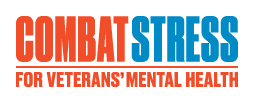Combat Stress announces new five-year strategy to improve veterans’ access to mental health treatment and support
Combat Stress announces new five-year strategy to improve veterans’ access to mental health treatment and support
Combat Stress has announced a new five-year strategic plan to improve veterans’ recovery experience and enable the charity to raise the money needed to fund its life-changing work.
The plans are in response to the continued growth in demand for the charity’s support, with a 143% increase in referrals over the last decade. In the last year alone Combat Stress received more than 10,000 calls to their Helpline, and more than 2,400 new veterans were referred for treatment.
Following an 18-month period of discussion with veterans, employees, military charities and healthcare professionals, the new strategy has been designed to offer greater flexibility and accessibility to treatment so veterans can be supported more quickly. At Combat Stress’ AGM today, the charity outlined its plans:
- Triage nurses will sit alongside the 24-hour Helpline team from January 2018, so veterans have a quicker start to their recovery journey.
- In addition to continuing to provide intensive residential treatment, the charity proposes to design a number of non-residential modular programmes in the community that fit in with veterans’ existing commitments, such as work or family life. Combat Stress is also undertaking a pilot study to explore digital solutions, such as using Skype to improve access to therapy.
- The charity is proposing from January 2018 to concentrate its intensive residential treatment work at their Surrey and Ayrshire treatment centres, and to deliver innovative and flexible outpatient services from its Shropshire treatment centre.
Sue Freeth, Chief Executive of Combat Stress, said:
“For almost a century Combat Stress has developed its approach and been innovative in its services, to offer the very best support for former servicemen and women with mental health issues, with the goal of helping them to live fulfilling lives.
“The average age of former servicemen and women who are turning to us for help is reducing and for them balancing the transition to civilian life, family, work and modern living is intricate and can be complicated.
“Our new strategy is focused on improving veterans’ recovery experience. In a time of increasing demand for our services, but with finite resources, the changes we are proposing will help us to provide the most effective clinical treatment for more veterans who need our help, to provide that help more quickly, and to offer more flexible services that fit around work and family pressures.”
